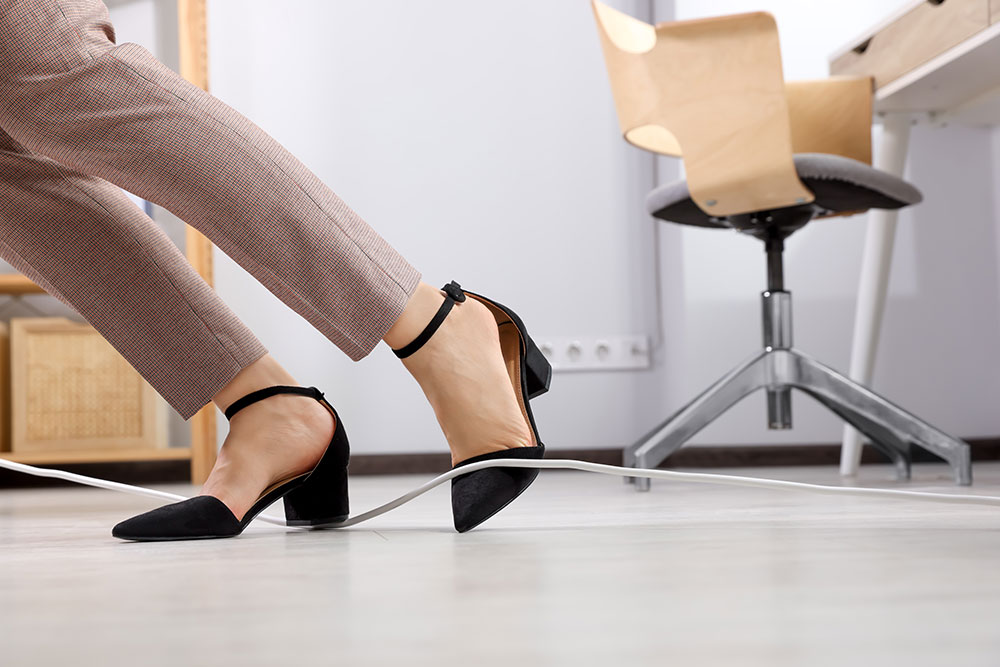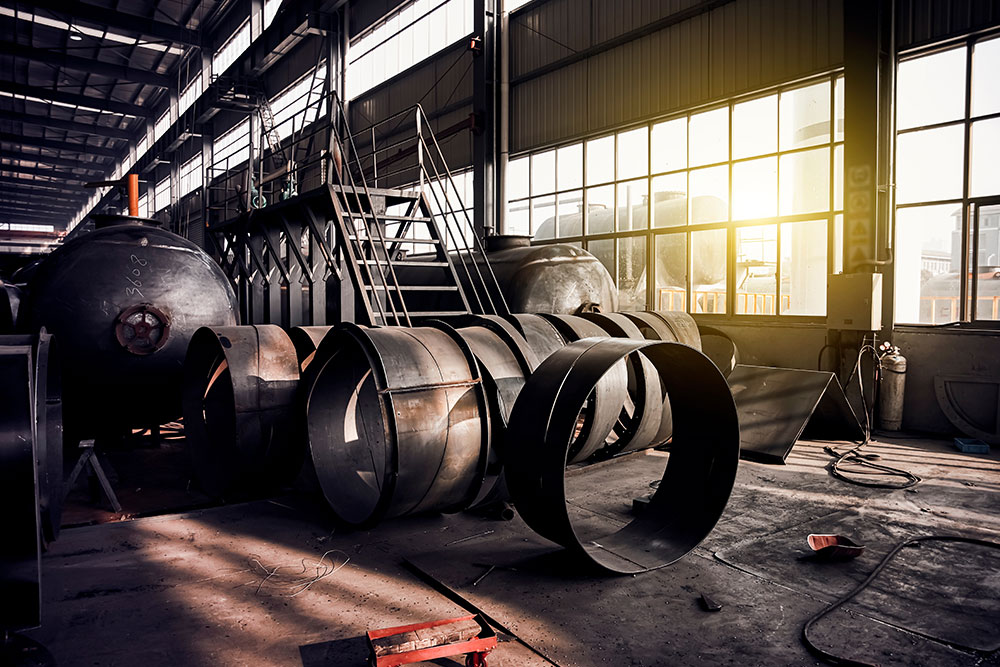
In the movies, slips, trips and falls can be highly entertaining. The old ‘slip on a banana peel’ gag can still have us rolling in the aisles. But slips, trips and falls in the workplace are no laughing matter.
Losing your footing and falling over might not seem like a big deal, but it can have serious consequences. Slips, trips and falls are the most common cause of non-fatal workplace injuries in the UK. They can happen to anyone, in any work environment, at any time.
Luckily, there are ways to reduce or even eliminate the risks associated with slips, trips and falls in the workplace. This article will examine the leading causes and explain the best ways to avoid these workplace accidents. You’ll save yourself some embarrassment and might even protect yourself or someone else from a nasty injury.
Slips, Trips and Falls Incidents - Prevalence of Injuries
There were 561,000 reported cases of non-fatal workplace injuries during 2022-23. Slips, trips and falls accounted for 32% of these injuries, according to recent figures released by the Health and Safety Executive (HSE).
This amounts to 179,520 people injured during 2022-23. To give you an idea of how many injuries there were, that’s almost double the number of people that could fit into Wembley Stadium.
Main Causes of Slips, Trips and Falls
So, how are all these people managing to fall over at work? They can’t all be clumsy. And there’s no nefarious Looney Tunes-type character dropping banana peels in every UK workplace.
As it turns out, several common causes of slips, trips and falls exist. Not many slips, trips and falls in the workplace are exotic or surprising. But that’s what makes them so common.
They can be caused by a spilt cup of tea, an extension cord, or inappropriate shoes. Any work environment can have a variety of hazards that could result in a slip, trip or fall. See our list below to check if these situations apply to your workplace. Chances are, one or more of them will.
Wet Flooring Surfaces
Liquid spills, cleaning activities, leaks and rain that has come in on people’s clothing can cause floors to become wet. Walk across a wet floor, and you vastly increase your risk of slipping and falling.
Slippery Flooring Surfaces
A newly polished floor looks great but is also a significant slipping hazard. Some glossy floor tiles can be very slick even when not polished recently. Especially if you’re not wearing shoes with good grip.
Loose or Uneven Flooring
Some workplaces cover up slippery floor tiles with rugs or mats. Unfortunately, rugs, carpets and other flooring coverings can be slipping hazards if they’re not secure. And if they’re not perfectly flush with the floor, they become a tripping hazard.
Loose floorboards, broken tiles or temporary floor coverings can create hazardous uneven surfaces. Your flooring should always be even and stable to prevent slips, trips and falls.
Trailing Cables and Cords
Every workplace needs electricity, so cables and cords will always be around. If you’re not carefully placing your cables and electrical cords, they’re almost guaranteed to cause someone to trip over them.

Obstacles and Obstructions
An obstacle is any kind of equipment, tool or material left in a place where someone might fall over it. Obstructions are more devious, however. Obstructions like steps, kerbs, low walls or floor sockets are fixed in place. Often, we don’t even realise an obstacle is a tripping hazard until we trip over it.

Insufficient Lighting
There’s no way to avoid slipping on something or tripping over it if you can’t see it. If you don’t have sufficient lighting in your place of work, you’re increasing the risk of slips, trips and falls. If your work environment is dim and dark, it’s time to scale up the lighting system.
Improper Footwear
What you wear on your feet could save you from a painful slip. While you might desperately want to show off a new pair of shoes, they might not be the best choice for your workplace. Appropriate safety boots or shoes must be provided and worn at all times.
Poor Housekeeping Practices
It’s important to stress the importance of maintaining a clean and organised workplace. Poorly placed equipment, supplies and waste are slip, trip and fall hazards that can result in severe accidents and significant fines.
How to Prevent Slips, Trips and Falls in the Workplace
Unfortunately, pretty much every workplace has slipping or tripping hazards. The good news is that there are straightforward and relatively simple ways to reduce or eliminate these risks.
Conduct a Risk Assessment
A risk assessment is the first thing you must do to reduce the risk of slips, trips and falls in the workplace. A risk assessment aims to identify the causes of slips, trips, and falls. Once you’ve identified hazards, you can figure out ways to eliminate or control the associated slipping or tripping risks.
To conduct a proper risk assessment, follow these five steps:
- Identify all hazards
- Determine who might be harmed and how
- Evaluate the risks and decide on control measures
- Record your findings and implement your control measures
- Regularly review the risk assessment and update it if necessary
Maintain Your Flooring
Ensure the floors in your workplace are even and in good condition. Any loose floorboards or broken tiling should be replaced or repaired. You might want to consider installing slip-resistant flooring. If you want to know how slippery your floor is, follow the HSE’s guidance on assessing floor slipperiness.

Keep Up with Your Housekeeping
Cleanliness counts when preventing slips, trips and falls in the workplace. Clean up all spills immediately, clear all obstacles, put warning signs near obstructions and keep all your cables and cords neatly bundled and taped down so they aren’t a tripping hazard. Replace your light globes if they’re not bright enough, or install new lighting.
Increase Your Team’s Hazard Awareness
How much do your workmates know about slips, trips and falls? If you educate your teams on the hazards, they can take measures to avoid risks and learn how to identify them.
How Can You Prevent Slips, Trips, and Falls?
Every year, thousands of people in the UK are seriously hurt as a result of slips, trips and falls in the workplace. You can help prevent these injuries by learning to identify and control workplace slip, trip and fall risks.
Our Slips, Trips and Falls Training course teaches workplace fundamentals that every employee should know to prevent these injuries.
Don’t slip up when it comes to health and safety at work. Sign up for fall prevention training today.


















































































































































































































































































































































































































































































































































































































































































































































